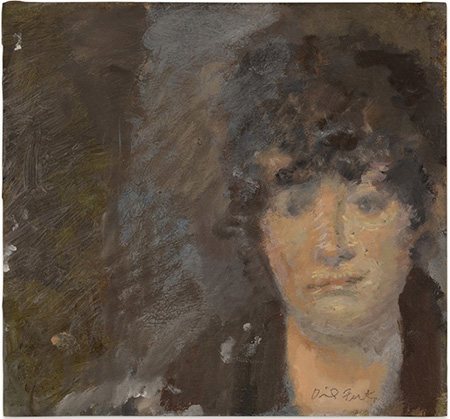
Continuing through January 27, 2024
The new Ridley Scott epic movie, “Napoleon,” has been criticized for its narrative incoherence, its preference for spectacle over historic fact, and its ‘woke’ demotion of the white European male protagonist to a pathetic, whining mess. Despite this, the Napoleonic era remains relevant due to current ultra-nationalist sentiments and expansionist wars, clashes not so much of civilizations but of paranoid monocultures and dwindling resources.
David Fertig’s “Paintings and Pastels” features seventeen new oils on canvas panel or Masonite and three mixed-media works on paper, nearly all of them based on the Napoleonic wars of 1803-1815. Unlike the empty spectacle of blockbuster epic movies, or their nineteenth-century equivalents (huge, chauvinistic battle paintings) Fertig’s works are small, intimate, and even poetic. In Alex Cohen’s 2021 film, “David, It’s Not About You,” the artist professes himself an inveterate bibliophile who shelves his art books as a hostess would seat her guests, according to compatibility. He is also an iconophile, “suffering from art heroin.” His Philadelphia studio, an image bank of clippings and copies, as well as boxes of more source material, evidences the artist’s obsessional immersion in his subject matter. Says Fertig, “I don’t live in the present … I could never imagine using contemporary images to say what I want to say.”
The paintings may derive from French Academic paintings or prints of Napoleonic battles, or details of larger works, but the artist’s loose, painterly, approach suggests the marine paintings of J.M.W. Turner, for instance, or the crowd paintings of Goya and the American satirist Jack Levine. They are by no means commemorations of military glory, but evocations of fire, mist, dust, and smoke — military mayhem — occasionally punctuated by flecks of bright color. The parade-ground uniforms of pre-industrial warfare are visualized by the artist as pompous declarations of courageous risk-taking, as opposed to today’s guerrilla camp gear. The paintings for all their looseness are realistic depictions of the fog of war rather than idealized, noble tableaux. They feel like a kind of dream, or hallucination, inheriting the blurry facticity of early photography, with its large cameras and slow shutter speeds, far from the ultra-sharpness of contemporary photography or the exhaustively researched commemorative paintings of the Romantic era.
History buffs will be attracted to the subject matter of these works but should be prepared for a degree of artistic license. “Décret,” for example, a small painting based on one of Napoleon’s printed decrees, contains an anachronistic and logically inexplicable name scrawled in pencil: Jacques le Moyne, a 16th-century cartographer and artist who documented the New World. “Seabird, or the loss of the ‘Droits’ de l’Homme’” depicts, almost abstractly, an albatross hovering above a distant patch of foam in which an apparently foundering French frigate (named after one of the founding documents of the French Revolution) bobs precariously. It was to be sunk by the British in 1797 during the attempted French invasion of Ireland.
“After a portrait by Géricault or ‘Irrsinnig Kleptomane’” (German translating as ‘insane kleptomania’) is a cropped, loosely rendered reworking of one of Theodore Géricault’s ten 1822 diagnostic portraits of patients from the asylum of Salpétrière, in Paris. “After the Death of Major Peirson by J.S. Copley” revisits the central portion of that colonial American painter’s 1783 painting of the heroic death two years previously of Major Frances Peirson. Major Pierson, who saved St. Heller, an island off the English coast, from a French attack at the cost of his life, becoming an English national hero through Copley’s careful reconstruction of the event and engravings made from it. “The Shannon and the Chesapeake” and “Ciudad Rodrigo” are based on a naval battle and siege, respectively, both from 1812. Finally, “Daughter of France after J.L. David” is a pastel portrait based on the neoclassicist’s 1804 Napoleonic-era portrait of the young Suzanne Le Pelletier de Saint-Fargeau. She was the daughter of the revolutionary Michel Le Pelletier, assassinated by Royalists, whom David idealized in 1793, dying in Greco-Roman draped nudity, a secular martyr, with the sword wound in his abdomen clearly visible, and a cross-like sword hovering above. The French state adopted Suzanne as a “daughter of the state.”
Viewers may not require the historical subtexts (or pretexts) to admire these paintings, which stand on their own aesthetically, but familiarity with the artist’s mental landscape does enrich understanding. Fertig, quoted again from the film, states, ” I deal specifically with legends … I read history for the art, not the facts.”
